$19.50
Description
1973-1975: Vietnam’s End and Global Shifts
Timeline of Main Events (1973-1975)
This timeline focuses on the events related to the Vietnam War and the broader context of U.S. foreign policy as reflected in the State Department telegrams.
1973:
- June 19: The U.S. Congress passes the Case-Church Amendment, forbidding further U.S. military involvement in Southeast Asia, effective August 15, 1973.
- July 16: Watergate Scandal: Former White House aide Alexander Butterfield reveals President Nixon’s secret recordings to the Senate Watergate Committee.
- August 14: U.S. bombing of Cambodia ends, marking the official halt to 12 years of U.S. combat activity in Southeast Asia.
- August 15: The Case-Church Amendment goes into effect, legally ending direct U.S. military involvement in Southeast Asia.
- August 22: Henry Kissinger is appointed U.S. Secretary of State, replacing William Rogers. Kissinger continues to serve as National Security Advisor concurrently.
- September 11: A U.S.-backed military coup in Chile overthrows the democratically-elected government of President Salvador Allende, who dies. General Augusto Pinochet begins his long rule.
- October 6: Yom Kippur War begins as Egyptian and Syrian forces attack Israel.
- October 16: Henry Kissinger and Le Duc Tho of North Vietnam are awarded the Nobel Peace Prize for their work on the Paris Peace Accords. Kissinger accepts, but Tho declines.
- October 17: The Arab Oil Embargo is imposed against several countries supporting Israel, triggering the 1973 energy crisis.
- October 22: Egypt accepts a U.S. cease-fire proposal, shifting its alignment.
- November 25: Greek Dictator George Papadopoulos is ousted in a military coup.
1974:
- January: North Vietnamese forces in South Vietnam, while still not strong enough for a full offensive, have rebuilt their divisions and captured key areas, violating the Paris Peace Treaty.
- April: The Angolan Civil War begins following the end of Portuguese colonial rule.
- May 18: India successfully detonates its first nuclear weapon under Project Smiling Buddha.
- July: Turkey invades Cyprus following a coup attempt against the Makarios government by Greek junta-backed factions.
- August 9: Richard Nixon resigns as President of the United States due to the Watergate scandal. Gerald Ford becomes President.
- August 14: Turkey launches a second invasion of Cyprus, occupying a significant portion of the island.
- September 12: The pro-Western monarch of Ethiopia, Haile Selassie, is overthrown by a Marxist military junta.
- December 13: North Vietnam attacks Phuoc Long Province in South Vietnam, a significant violation of the Paris Peace Treaty.
- December 26: The 7th North Vietnamese Army division captures Dong Xoai in Phuoc Long Province.
1975:
- January 1: In the Watergate scandal, John N. Mitchell, H. R. Haldeman, and John Ehrlichman are found guilty.
- January 6: North Vietnamese forces capture Phuoc Long city and the surrounding province, a major loss for South Vietnam.
- January 7: OPEC agrees to raise crude oil prices by 10 percent.
- March 1: The North Vietnamese Army (NVA) launches a major offensive in the Central Highlands of South Vietnam.
- March 10: North Vietnamese troops attack Ban Me Thuot in the Central Highlands.
- March 13: South Vietnam President Nguyen Van Thieu orders the evacuation of the Central Highlands.
- March 25: Hue, South Vietnam’s third-largest city, falls to the North Vietnamese.
- April 4: The first group of “boat people” fleeing Vietnam arrives in Malaysia. The U.S. military begins Operation Babylift, but the first flight crashes, resulting in significant casualties.
- April 10: NVA divisions advance towards Saigon. President Ford unsuccessfully requests aid for South Vietnam and Cambodia from Congress.
- April 12: The Khmer Rouge advances on Phnom Penh. President Ford orders the evacuation of the U.S. mission in Cambodia.
- April 17: The Khmer Rouge captures Phnom Penh. Pol Pot establishes the Democratic Republic of Kampuchea and becomes its leader.
- April 21: South Vietnam President Nguyen Van Thieu resigns.
- April 23: President Ford declares in a speech that the Vietnam War “is finished as far as America is concerned.”
- April 25: North Vietnamese soldiers close in on Saigon.
- April 28: President Ford orders the emergency evacuation of American personnel and high-risk South Vietnamese nationals from Saigon.
- April 29: U.S. Marines and Air Force helicopters begin an airlift from Saigon, evacuating over 1,000 American civilians and 7,000 South Vietnamese refugees.
- April 30: North Vietnamese forces take control of Saigon. South Vietnamese forces surrender unconditionally. Two U.S. Marines are killed in a rocket attack on Tan Son Nhut airport, the last American combat deaths in the war. The last Marines guarding the U.S. embassy in Saigon are evacuated.
- May 7: President Ford formally declares an end to the “Vietnam era.”
- May 12: Khmer Rouge forces seize the U.S. merchant ship SS Mayaguez.
- August 27: Ethiopian Emperor Haile Selassie dies.
- September 1: Israel and Egypt initial the Sinai II agreement on disengagement.
- November 11: Angola gains independence from Portugal, followed by the intensification of its civil war.
- November 25: The Irish Republican Army is outlawed in the United Kingdom.
- November 28: Portuguese Timor declares independence from Portugal.
- December 2: The communist Pathet Lao takes control of Laos.
- December 7: Indonesia invades East Timor.
Cast of Characters and Brief Bios:
- Henry Kissinger: U.S. Secretary of State (appointed August 1973) and National Security Advisor. Played a key role in negotiating the Paris Peace Accords, pursuing détente with the Soviet Union, and navigating the end of the Vietnam War. Awarded the Nobel Peace Prize in 1973 (which he accepted).
- Le Duc Tho: North Vietnamese diplomat and negotiator. Shared the Nobel Peace Prize with Kissinger in 1973 for their work on the Paris Peace Accords, but declined the award.
- Richard Nixon: President of the United States until his resignation in August 1974 due to the Watergate scandal. His administration oversaw the withdrawal of U.S. forces from Vietnam and the signing of the Paris Peace Accords.
- Gerald Ford: Vice President who became President of the United States upon Nixon’s resignation in August 1974. He presided over the final collapse of South Vietnam and declared the “Vietnam era” over for the U.S.
- Nguyen Van Thieu: President of South Vietnam until his resignation on April 21, 1975, as North Vietnamese forces closed in on Saigon.
- Pol Pot: Leader of the Khmer Rouge, a radical communist movement that seized power in Cambodia in April 1975. Became the leader of the newly established Democratic Republic of Kampuchea.
- Salvador Allende: The democratically-elected socialist President of Chile who died during a U.S.-backed military coup on September 11, 1973.
- Augusto Pinochet: General who led the military junta that overthrew Allende in Chile and ruled the country for the next 16 years.
- Haile Selassie: The pro-Western monarch of Ethiopia who was ousted by a Marxist military junta in September 1974 and died in August 1975, ending a long dynasty.
Vietnam War Department of State 40,000 Telegrams 1973-1975 Plus 950,000 Covering World Events
1,560,000 pages of electronic telegram information, including 991,600 pages of State Department telegrams, with 568,400 pages of description/attribution/error sheets.
Includes approximately 40,000 pages of Vietnam War related Department of State Electronic Telegrams: 1973 – 1975
State Department Cables from the Department of State Central Foreign Policy File, dating from April 1973, to December 31, 1975.
These records are popularly known as the “State Department Cables” or the “State Department Telegrams.” This collection contains the fully releasable telegrams determined to have permanent historical value that could be exported from the contemporary Department of State Archiving System [SAS].
The materials relate to all aspects of American bilateral and multilateral foreign relations and routine administrative and operational activities of the Department of State and its Foreign Service posts. The telegrams convey official information about policy proposals and implementation, program activities, or personnel and post operations between the Department of State and posts abroad. After telegrams were transmitted, they were preserved in a central database that contained the text of the telegrams.
Each text file record potentially contains the following types of information: concepts; date; drafter; who the telegram is from; office; subject; Traffic Analysis by Geography and Subject (TAGS); who the telegram is to; message number; and message. The series also includes records such as airgrams, memoranda, correspondence, reports, diplomatic notes, and related material that documented Department of State policies in the Central Foreign Policy Files.
Vietnam War
Telegrams cover the diplomatic end game of American military involvement in Southeast Asia. Other telegrams relate State Department foreign relation activity dealing with the wind-down of American involvement in the Vietnam War.
Topics include: Embassy reports concerning the current situation with the ceasefire. Plans for economic assistance to the government of Vietnam. Progress of Operation Homecoming and the return of prisoners of war. Military assistance to the Republic of Vietnam. Reports of skirmishes between North and South Vietnam forces. The escalation of Viet Cong violence. Security for American personnel in Vietnam. Preparations in case of the necessity to evacuate the embassy.
Telegrams include approximately 6,492 telegrams directly from the State Department to and from the U.S. embassy in Saigon.
Vietnam War events occurring during the period of time covered by the telegrams include:
June 19, 1973 – The U.S. Congress passes the Case-Church Amendment which forbids any further U.S. military involvement in Southeast Asia, effective August 15, 1973
August 14, 1973 – The U.S. bombing of Cambodia ends, marking the official halt to 12 years of combat activity in Southeast Asia.
August 22, 1973 – Henry Kissinger is appointed by President Nixon as the new Secretary of State, replacing William Rogers.
October 16, 1973 – Henry Kissinger and Le Duc Tho of North Vietnam win Noble Peace Prize. Kissinger accepts, Tho declines the award.
January 1974 – Though they are still too weak to launch a full-scale offensive, the North Vietnamese have rebuilt their divisions in the South, and have captured key areas.
December 13, 1974 – In violation of the Paris peace treaty, North Vietnam attacks Phuoc Long Province in South Vietnam.
December 26, 1974 – The 7th North Vietnamese Army division captures Dong Xoai.
January 6, 1975 – In a disastrous loss for the South Vietnamese, the NVA take Phuoc Long city and the surrounding province.
March 1, 1975 – The NVA launches an offensive in the Central Highlands of South Vietnam.
March 10, 1975 – North Vietnamese troops attack Ban Me Thuot, South Vietnam, on their way to Saigon.
March 13, 1975 – South Vietnam President Nguyen van Thieu evacuates the Central Highlands.
March 25, 1975 – The city of Hue, South Vietnam’s third largest city, falls to the North Vietnamese.
April 4, 1975 – The first group of boat people fleeing Vietnam began arriving in Malaysia.
April 4, 1975 – The U.S. military begins Operation Babylift. The first flight of the operation ends when a C5A 80218 crashes after takeoff, killing 138, with 176 survivors.
April 10, 1975 – North Vietnamese Army Divisions march toward Saigon. President Ford addresses a joint session of Congress, unsuccessfully requesting aid for South Vietnam and American allies in Cambodia.
April 12, 1975 – Khmer Rouge advance on the Cambodian capital Phnom Penh. President Ford orders the evacuation of the U.S. mission in Cambodia.
April 17, 1975 – The Khmer Rouge captures Phnom Penh. Pol Pot declares the existence of the Democratic Republic of Kampuchea in Cambodia and makes himself its leader.
April 21, 1975 – South Vietnam leader Nguyen Van Thieu resigns.
April 23, 1975 – In a speech at Tulane University, President Ford declares that the Vietnam War “is finished as far as America is concerned.”
April 25, 1975 – North Vietnamese soldiers close in on the South Vietnamese capital of Saigon.
April 28, 1975 – President Ford orders the emergency evacuation of American personnel and high-risk South Vietnamese nationals.
April 29, 1975 – U.S. Marines and Air Force helicopters, flying from aircraft carriers off Vietnam begin an airlift. In 18 hours, evacuating over 1,000 American civilians and 7,000 South Vietnamese refugees out of Saigon.
April 30, 1975 – North Vietnam forces take control of Saigon. South Vietnam forces surrender unconditionally.
April 30, 1975 – At 4:03 a.m., two United States Marines are killed during a rocket attack on Saigon’s Tan Son Nhut airport. They are the last Americans to die in combat during the Vietnam War.
April 30, 1975 – At daylight, the last Marines guarding the U.S. embassy in Saigon are lifted off.
May 7, 1975 – President Ford formally declares an end to the “Vietnam era.”
May 12, 1975 – Khmer Rouge forces in Cambodia seize the United States merchant ship SS Mayaguez.
OTHER WORLD-WIDE TOPICS INCLUDE:
Soviet Union
Telegrams include 20,377 telegrams directly to and from the U.S. embassy in Moscow and the State Department.
Topics include: The Strategic Arms Limitation Talks II. SALT II was a second round of talks from 1972 to 1979 between the U.S. and Soviet Union, which sought to curtail the manufacture of strategic nuclear weapons. It was a continuation of progress made during the SALT I talks. The Nixon-Brezhnev summit meetings. Space cooperation and the planning for the Apollo-Soyuz joint space mission. Developments concerning Jewish emigration.
Henry Kissinger
Telegrams include 98,571 telegrams to, from, and mentioning Henry Kissinger. The telegrams cover a period of time in which Henry Kissinger served concurrently as both Assistant to the President for National Security Affairs, commonly referred to as the National Security Advisor, and as United States Secretary of State. During this time, Kissinger was pioneering the policy of détente that led to a significant relaxation in U.S.–Soviet tensions. In 1973, Kissinger negotiated the end to the Yom Kippur War, which had begun with a surprise attack against Israel by Egyptian and Syrian forces.
The many international and domestic events occurring during the period of time covered by the telegrams include:
July 16, 1973 – Watergate Scandal: Former White House aide Alexander Butterfield informs the United States Senate Watergate Committee, that President Richard Nixon had secretly recorded potentially incriminating conversations.
September 11, 1973 – Chile’s democratically-elected government is overthrown in a military coup after serious instability. President Salvador Allende dies, and General Augusto Pinochet heads a U.S.-backed military junta that will govern Chile for the next 16 years.
October 6, 1973 – Yom Kippur War: The fourth and largest Arab-Israeli conflict begins, as Egyptian and Syrian forces attack Israel on Yom Kippur.
October 22, 1973 – Egypt defects to the American camp by accepting a U.S. cease-fire proposal during the October 1973 war.
October 17, 1973 – The Arab Oil Embargo against several countries which supported Israel triggers the 1973 energy crisis.
November 25, 1973 – Greek Dictator George Papadopoulos is ousted in a military coup led by Lieutenant General Phaidon Gizikis.
April 1974 – The Angolan Civil War. This conflict devastated newly-independent Angola following the end of Portuguese colonial rule in April 1974. It became Africa’s longest running conflict. Formally brought to an end in 2002, an estimated 500,000 people were killed and tens of thousands more were displaced during the 27-year civil war.
May 18, 1974 – Nuclear test: Under project Smiling Buddha, India successfully detonates its first nuclear weapon, becoming the sixth nation to do so.
July 1974 – After an attempted coup against the Makarios government by extreme right-wing factions aided by the Greek junta, Turkey invaded Cyprus.
August 9, 1974 – President of the United States, Richard Nixon, resigns from office.
August 9, 1974 – Gerald Ford becomes President of the United States upon the resignation of Nixon.
August 14, 1974 – Turkey invades Cyprus for the second time, occupying 37% of the island’s territory.
September 12, 1974 – The pro-Western monarch of Ethiopia, Haile Selassie, is ousted by a Marxist military junta.
January 1, 1975 – In the Watergate scandal, John N. Mitchell, H. R. Haldeman and John Ehrlichman are found guilty.
January 7, 1975 – OPEC mets and agrees to raise crude oil prices by 10 percent.
March 1, 1975 – The NVA launches an offensive in the Central Highlands of South Vietnam.
August 27, 1975 – Ethiopian emperor Haile Selassie dies, bringing an end to the 3000 year-old monarchy.
September 1, 1975 – Israel and Egypt initialed the Sinai II agreement on disengagement.
November 11, 1975 – Angola gains its independence from Portugal, soon followed by civil war.
November 25, 1975 – The Irish Republican Army is outlawed in the United Kingdom.
November 28, 1975 – Portuguese Timor declares its independence from Portugal.
December 2, 1975 – Communist lead Pathet Lao takes control of Laos.
December 7, 1975 – Indonesia invades East Timor.


SAMPLE PAGES FROM OTHER REGIONS




Related products
-
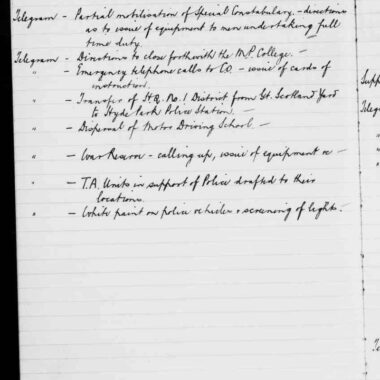
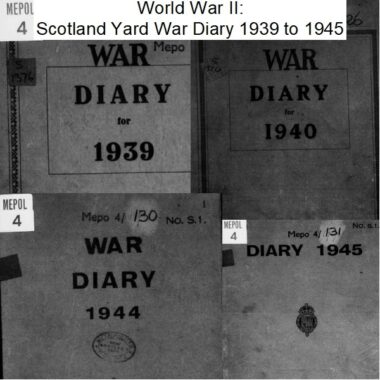
World War II: Scotland Yard War Diary from 1939 to 1945
$3.94 Add to Cart -
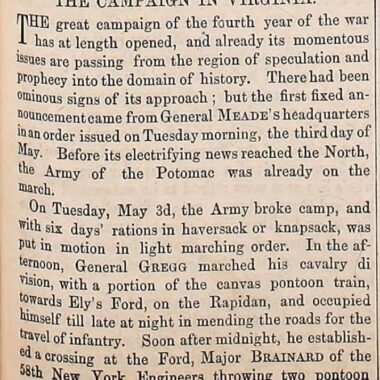
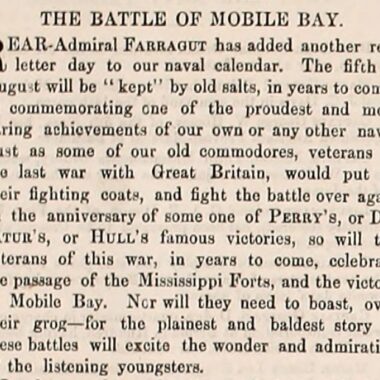
Civil War: Army Navy Journal & Gazette Volume 1 (1863 – 1864)
$19.50 Add to Cart -


World War II: A Soldier’s Handbook on the Japanese Army
$3.94 Add to Cart -
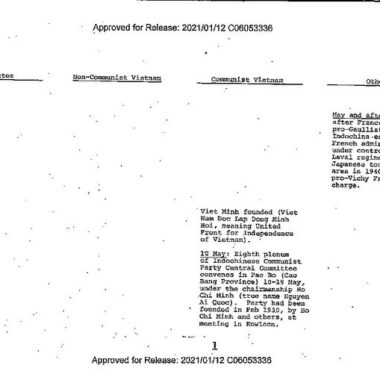
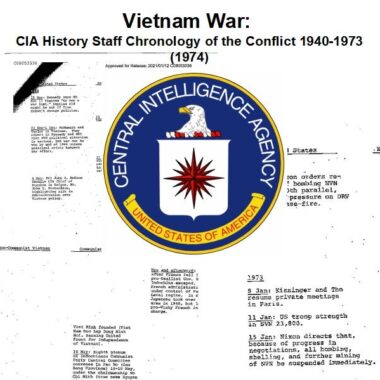
Vietnam War: CIA Chronology of the Conflict, 1940-1973 (1974)
$1.99 Add to Cart

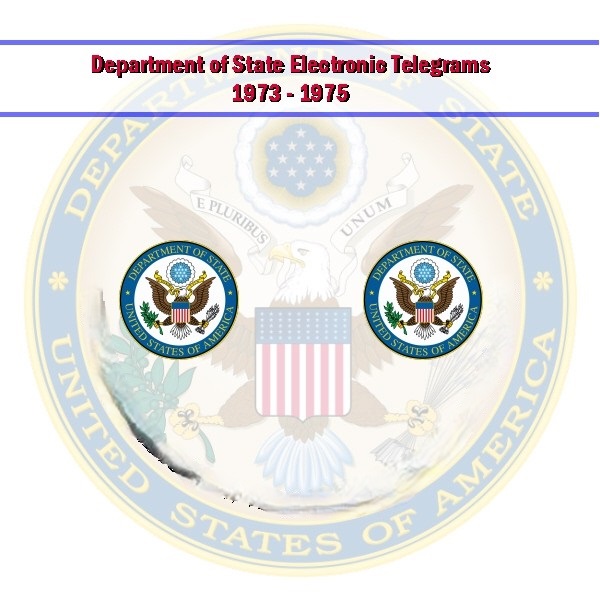
Reviews
There are no reviews yet.